Fitbit Versa 4 review
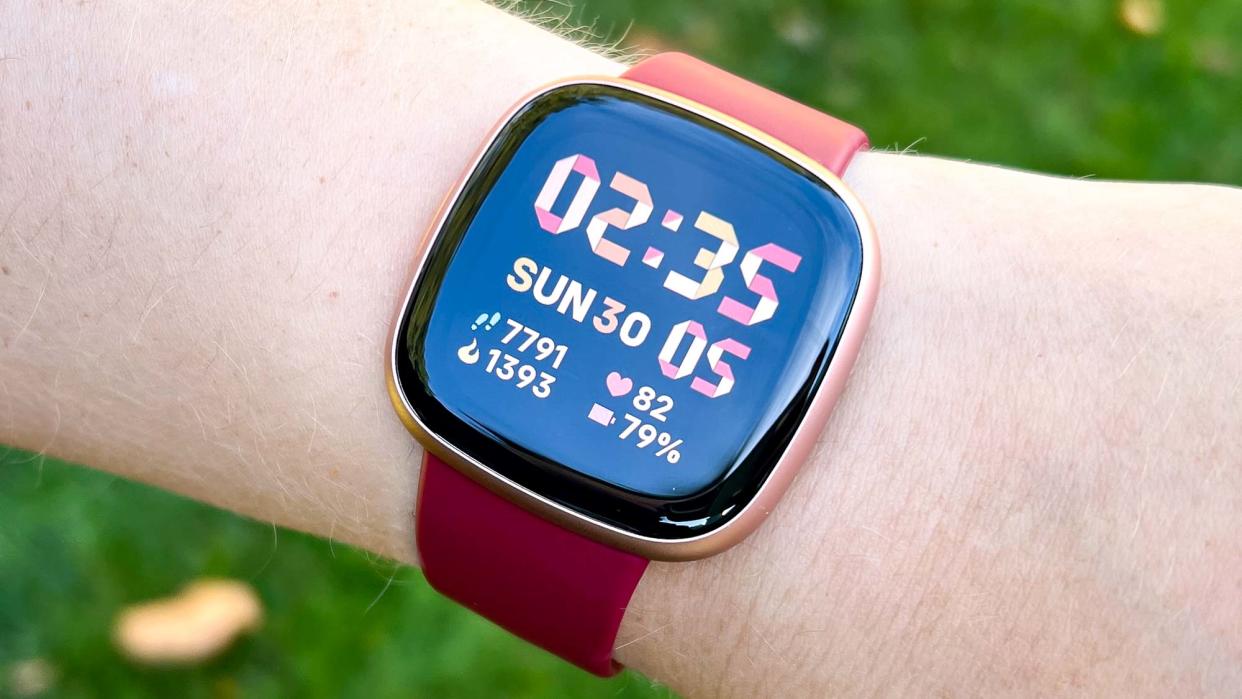
Fitbit Versa 4 specs
Price: $199 ($229 at launch)
Size: 40.5 x 11.2mm
Display: 1.58-inch AMOLED
Weight: 1.33 oz
Battery life: 6 days
Water resistance: Up to 50m
GPS: No
There was a time when the Fitbit Versa was hands-down the best Fitbit smartwatch you can buy, but things have changed. While the Versa 4 has its perks, it also lacks in some glaring ways. Trade-offs are to be expected for a brand’s bottom-tier smartwatch, after all.
Compared to the Fitbit Versa 3, the Fitbit Versa 4 has an updated interface and design that streamlines navigation and resurrects a physical side button. It also has the same great 6-day battery life and Amazon's Alexa voice assistant.
But the Versa 4 isn’t as strong as an activity tracker, with inaccurate heart rate readings that negatively influence earned Active Zone Minutes. It’s also not as smart as the Versa 3, having lost support for third-party apps and Google Assistant.
This is in part thanks to Google's acquisition of Fitbit. Rather than keeping certain features in Fitbit's main range, the brand's new parent company launched the Pixel Watch 2, which combines Fitbit tracking with Google apps.
Still, if you’re looking for a basic step counter with sleep tracking, stamina, and other small conveniences at a mid-range price, this Fitbit Versa 4 review can help you decide whether it’s the right tracker for your daily routine.
Fitbit Versa 4 review: price and availability
The Fitbit Versa 4 launched in late 2022, costing $229. However, towards the end of 2023, the price dropped to $199 and it can now often be found at various retailers at a discounted price around $150.
At its new regular price, the Versa 4 is $50 less than the Fitbit Sense 2, which comes with more health-monitoring sensors like an ECG and a stress tracking skin sweat monitor. And if you're a fan of the Google ecosystem, the Pixel Watch 2 starts at $299 and includes Fitbit's fitness tracking sensors and app.
The Versa 4 is functionally very similar to the Fitbit Charge 6, the company's current top of the range fitness tracker. There are a few differences — the Charge 6 has stress tracking tools, the Versa 4 supports on-wrist calls and Alexa — but the most significant is the Versa 4's larger color display.
Fitbit Versa 4 review: design
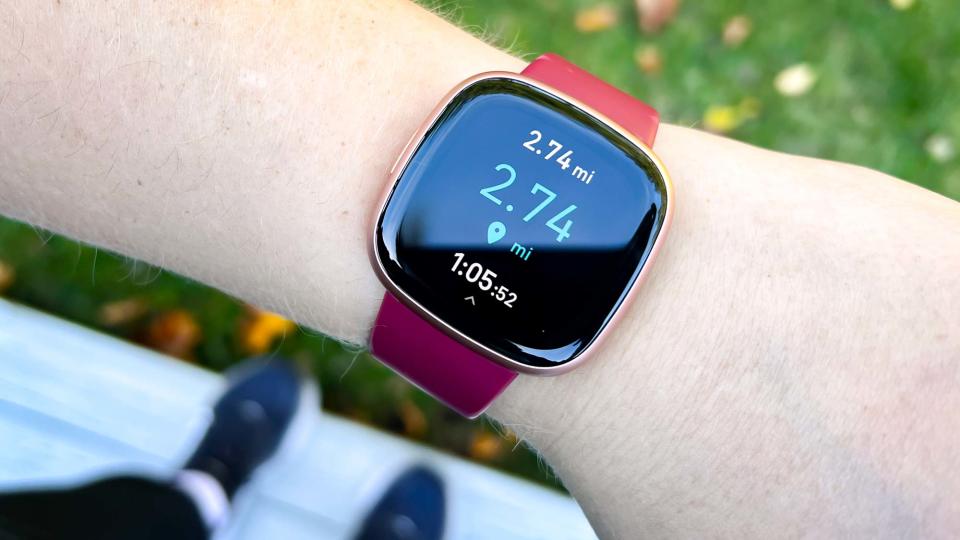
The Fitbit Versa 4’s squircle design looks pretty similar to the Fitbit Versa 3 at a glance, but it features one major design change: the former capacitive touch button is now a physical touch button, which I much prefer after having used both.
This button opens the app menu with a short press and launches Alexa with a long press (though this is the default, you can assign a different long-press action). However, when it comes to aesthetics, the Versa 4 is one of my favorite smartwatches.
It’s perhaps not as jewelry-like as the Fitbit Luxe, but the Copper Gold finish of my review unit felt easy to style. Plus, the device is quite lightweight and sits as flush to my wrist as the Apple Watch Series 8 (if not closer), making it comfortable for both all-day and overnight wear.
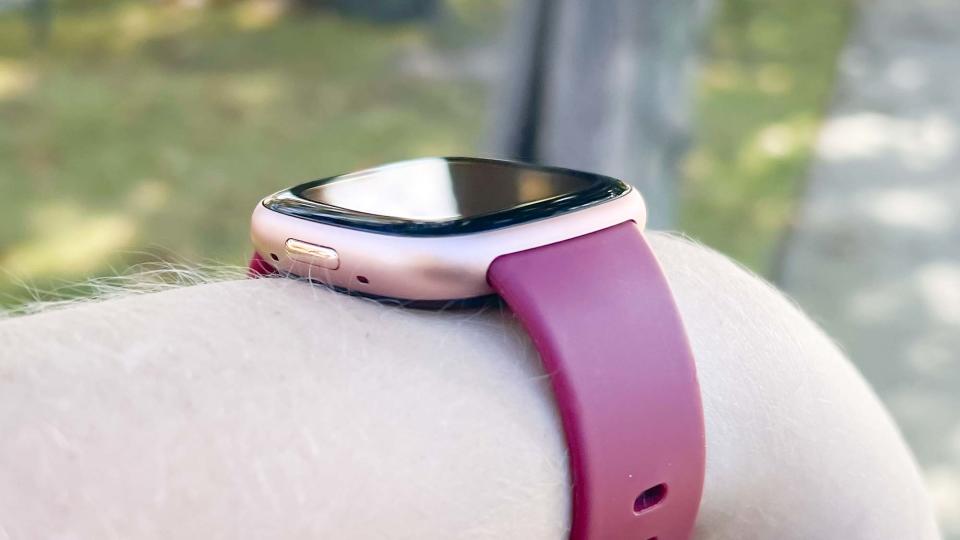
The Versa 4 also takes cues from the tile-based experience found on Google's Wear OS smartwatch platform, so when you swipe left or right on the touchscreen, you can see your key apps and metrics.
Otherwise the watch face itself can be changed in the Fitbit app. I feel that there’s an ample selection of options, though each individual face isn’t as customizable as those on Wear OS or Apple's watchOS platform.
You can customize the watch with the interchangeable straps. I embraced this on the Sense 2, so I’m glad that the variety of bands work with both devices. I especially like the perforated sport bands, perhaps because it reminds me of the Nike Apple Watch band.
Fitbit Versa 4 review: fitness tracking
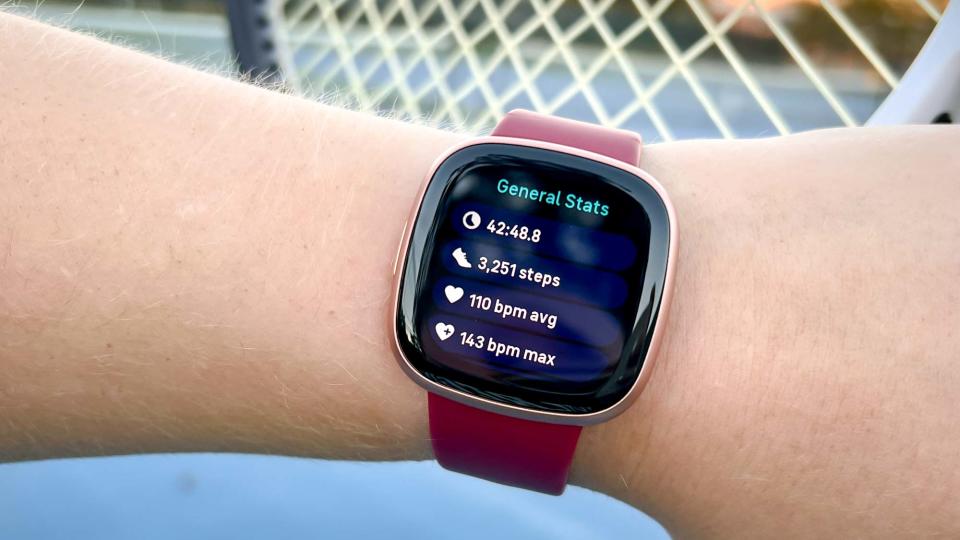
The core of the Versa 4 experience is still fitness tracking. You can monitor your sleep, record your step count, and track a wide variety of workouts and outdoor activities. Generally, this was up to Fitbit's usual high standards.
However, during my tennis, walking and yoga workouts, I noticed significant discrepancies with the heart rate tracker. Compared to the Apple Watch Ultra, the Versa 4’s heart rate readings read 10-to-15 bpm lower at any given moment.
I witnessed a similar gap when I tried wearing the Versa 4 at the same time as the first-generation Pixel Watch, which has one of the most impressive heart rate sensors I’ve seen for a smartwatch.
As someone who checks their heart rate consistently during exercise to manage effort, the Versa 4’s inaccuracy left me frustrated. It also makes me question how a user could trust the watch’s high and low heart rate alerts.
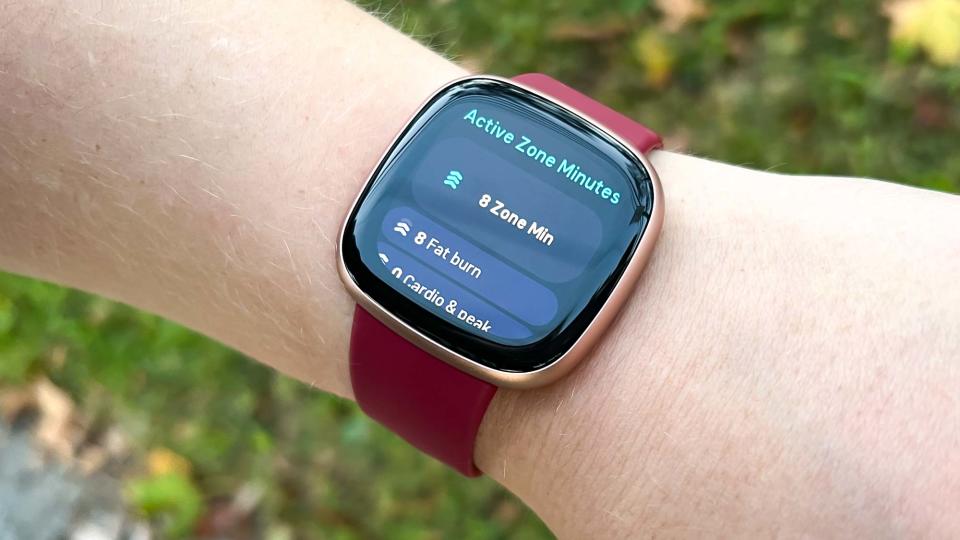
Once I spotted this, I reached out to Fitbit, and the company responded by pointing out the difference in algorithms between Fitbit and Apple Watch resulting in different heart rate readings. However, other reviewers from Connect the Watts and our sister site TechRadar have also noted similar issues with their review units.
That said, if you’re not as keen on checking your heart rate, this might not matter much to you. Though, again, it left me frustrated that I didn’t earn Active Zone Minutes when I knew I was putting the work in.
Active Zone Minutes is how Fitbit encourages movement, with the goal being to bank the WHO’s recommended 150 minutes of moderate exercise per week. I’m normally a fan of this feature, but not on the Versa 4.
Luckily, the heart rate reading errors didn’t extend as severely to sleep tracking. In fact, the Versa 4 is a great sleep-tracking smartwatch. The data collected overnight reflected my understanding of my rest, with the watch noticing when I woke up to doom scroll as well as the different stages of my sleep cycle.
Every month, you’ll get a sleep profile, or overview of your sleep habits. Fitbit will also assign you an animal that illustrates your sleep behavior, so that you might better understand your metrics.
Fitbit Versa 4 review: features
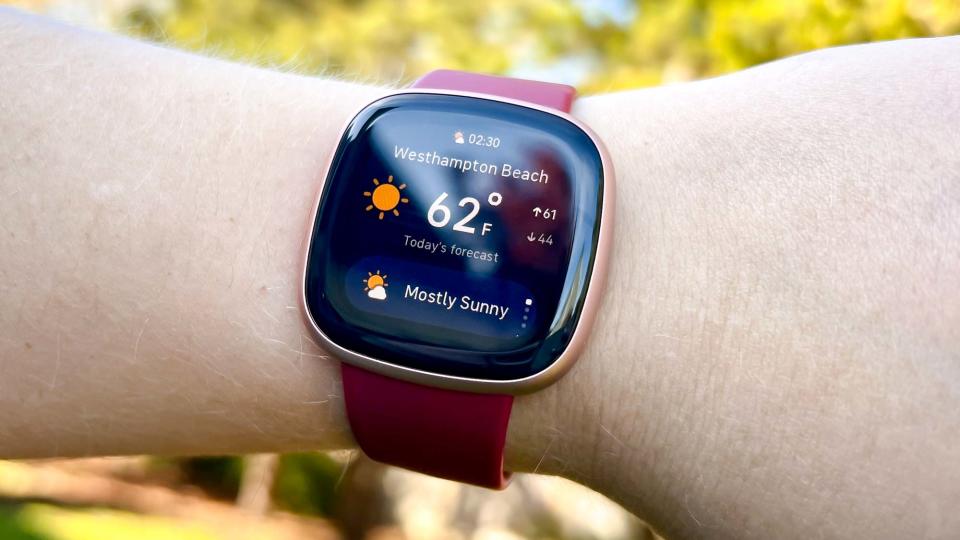
As we touched on earlier, Google decided to make many smartwatch features that used to appear on Fitbit devices exclusive to the Pixel Watch instead. So, you can't download music to the Versa 4 or install third-party apps, like you could on the Versa 3.
It's a disappointing decision, as it unnecessarily restricts the Versa 4, in a way that Apple doesn't attempt with the Apple Watch. However, the Versa 4 does get the basics right, with timers, alarms, weather reports, and find my phone support.
And it'll mirror your phone's notifications, whether you use an Android smartphone or iPhone. But there are a few Android-only features, like on-wrist calls, which only works if you're still in Bluetooth range of your phone.
That's down to the fact that Fitbit's watches don't have cellular support, so if you want to stay connected, you'll need to have your phone nearby. This isn't a problem on many of the best smartwatches, further highlighting that the Versa 4 is essentially a large fitness tracker.
I’d consider Alexa the “smartest” thing about the Versa 4. While it’s weird that the Versa 4 doesn’t also have Google Assistant (the Versa 3 lets you choose either assistant), Alexa does the job. I asked Alexa for nearby restaurant recommendations, updates on my Amazon packages. and to set reminders.
And it took several months post-launch, but Google did eventually launch Google Maps and Google Wallet for the Versa 4. And thanks to the watch's NFC chip, you can use the Versa 4 for contactless payments while on the go.
Fitbit Versa 4 review: battery life
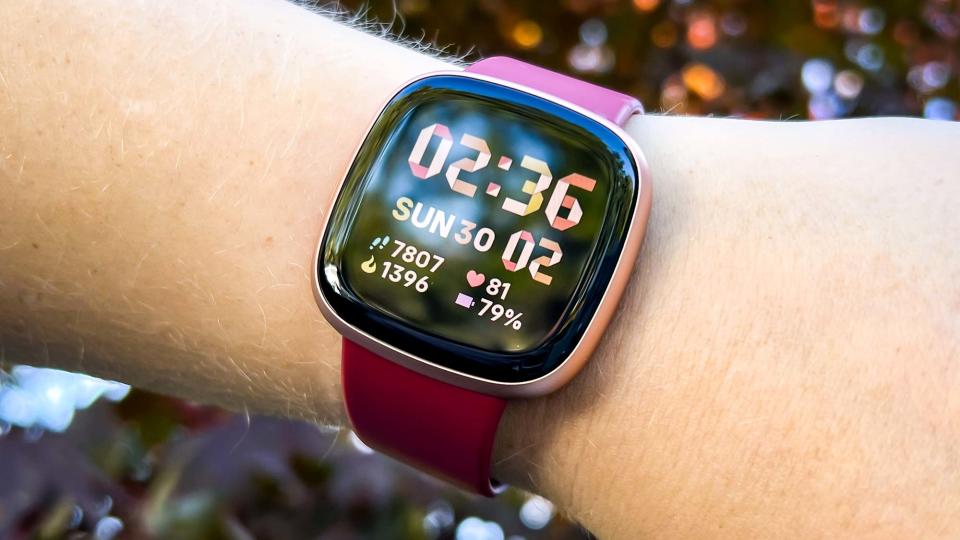
If you're primarily looking for a nice looking fitness tracker with good battery life, the Versa 4 is a great option. It has a 6-day battery life, so you won't need to continually recharge it, as you would the Apple Watch.
This longevity means it matches the Sense 2, which is the more expensive of Fitbit's smartwatches. However, if you're really looking to extend time between charges, the Garmin Forerunner 55 blows the Versa 4 away with 2 weeks of battery life.
In my experience, the Versa 4 can last up to 6 days, but that’s without the always-on display enabled and limited workout/GPS tracking. With the always-on display enabled, the battery drains more quickly — I managed about 2.5 days.
Personally, I’d skip the always-on option for better battery life, but that’s my preference. It’s there if you want it. It has a proprietary charger with USB-A, which is a fairly dated choice. However, my unit charged up from dead to full in an hour.
Should you buy the Fitbit Versa 4?
It's hard to recommend the Fitbit Versa 4 as a smartwatch. It's missing too many features that make it a compelling option. But that doesn't mean you shouldn't buy it either. Fitbit excels at fitness tracking, and the Versa 4 does that well.
Yes, I had problems with the heart rate monitor's accuracy, but the sleep and general activity tracking didn't disappoint. The main issue with the Versa 4 is that it's not clear who the company designed it for.
The Fitbit Sense 2 is marginally more expensive, but has a better array of sensors, especially if you're looking for a more holistic overview. The Charge 6 is almost the same with a smaller body, but costs a lot less.
The Pixel Watch 2 looks similar, costs more, but is the Fitbit smartwatch the Versa 4 could have been. But at its new lower price, especially if you can pick it up at a discount, it's a great way to keep tabs on your fitness without breaking the bank.
